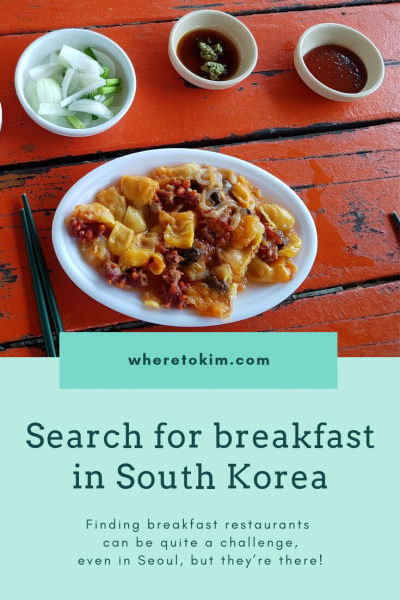Best tips for finding Korean food in South Korea. Finding breakfast restaurants can be quite a challenge, even in Seoul, but they’re there!
Not every hotel in South Korea offers breakfast and even if they do it might be more interesting (and cheaper) to go to a local restaurant to eat Korean food. This is easier when you’re in a big city, but even in Seoul, it can be a challenge if you don’t know where to go.
Many restaurants don’t open before 11 am. At least not the ones you can find information about online. And it requires some practice or knowledge of the area to find one of the many small family-owned establishments that open early to have your Korean breakfast.
1) Find restaurants with Maps
Use KakaoMap (“Food” filter) or Google Maps (“restaurants” filter) to search for restaurants in your area including reviews and opening times.
Even though you probably can’t read the reviews in KakaoMap, you can still watch pictures of the food and the menu.
Google maps
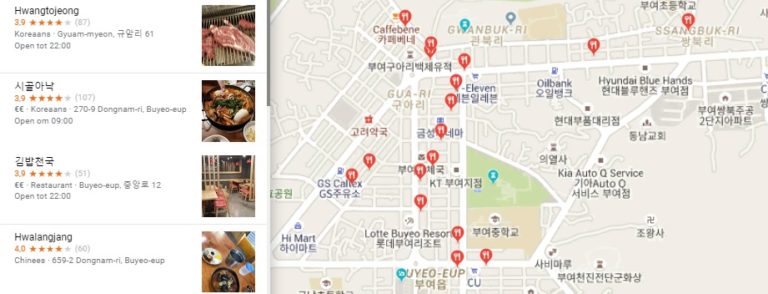
KakaoMap
App
The app of KakaoMap is available in English.
Click on the search bar to see the filters and click on ‘Food’ to select all restaurants. From there you can scroll through the list, view the restaurants on the map and click on a restaurant to see more information like opening hours.
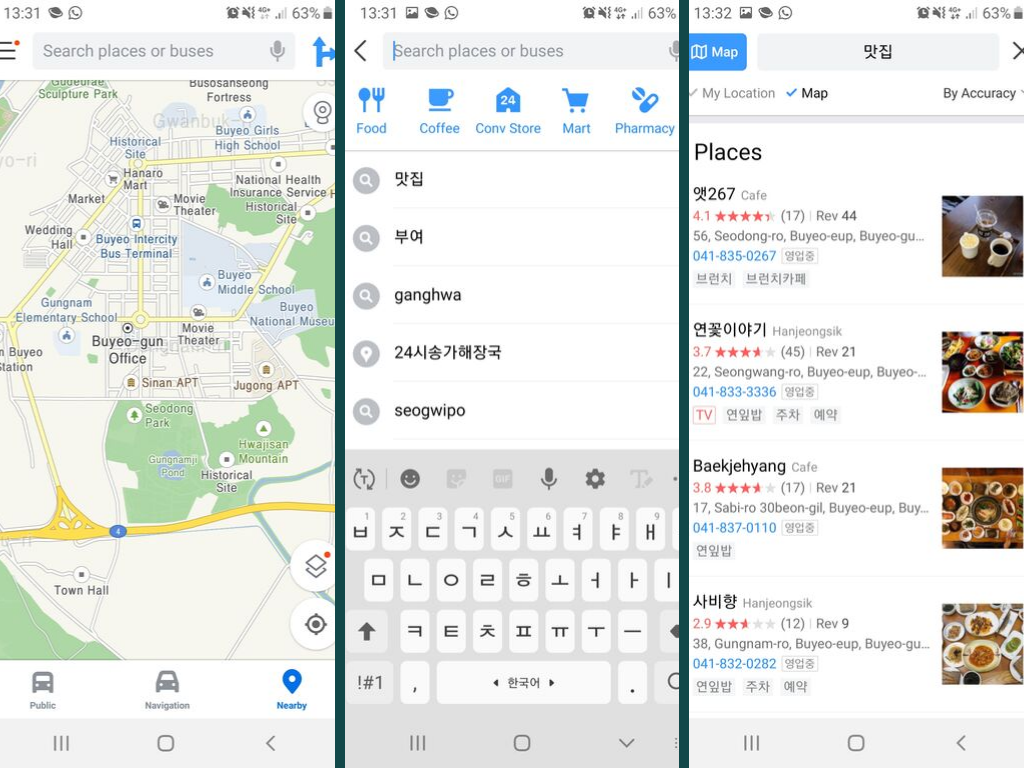
Desktop version
The desktop version is Korean only, but with the following tips you can still use it even if you can’t read Korean.
For food, use the ‘주변’ option to choose filters for your map. Pick ‘음식점’ for restaurants and select ‘전체’ for all types of food or a specific filter for the cuisine you’re looking for like ‘한식’ (Korean food).
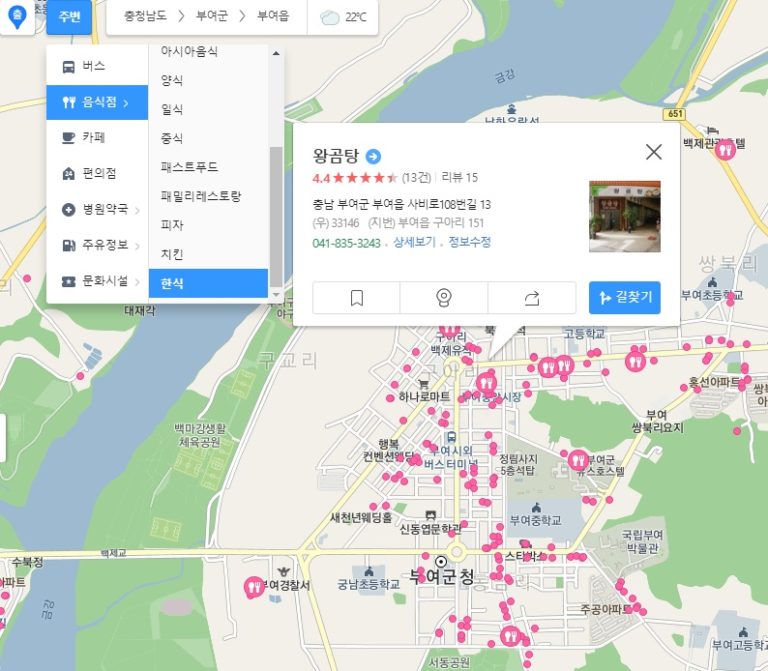
If you select a restaurant that looks interesting, you can check opening hours by clicking on the name of the restaurant for their info page.
In the picture below you can see that this restaurant is open every day ‘매일’ from 10:00 till 22:00. If you see ‘화-일’ instead, then it means those opening hours apply Tuesday till Sunday and the restaurant is closed on Mondays.
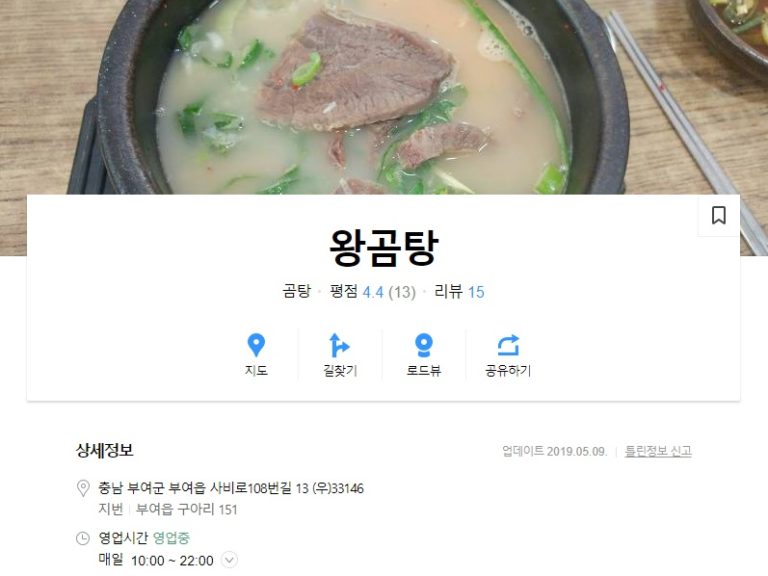
2) Explore
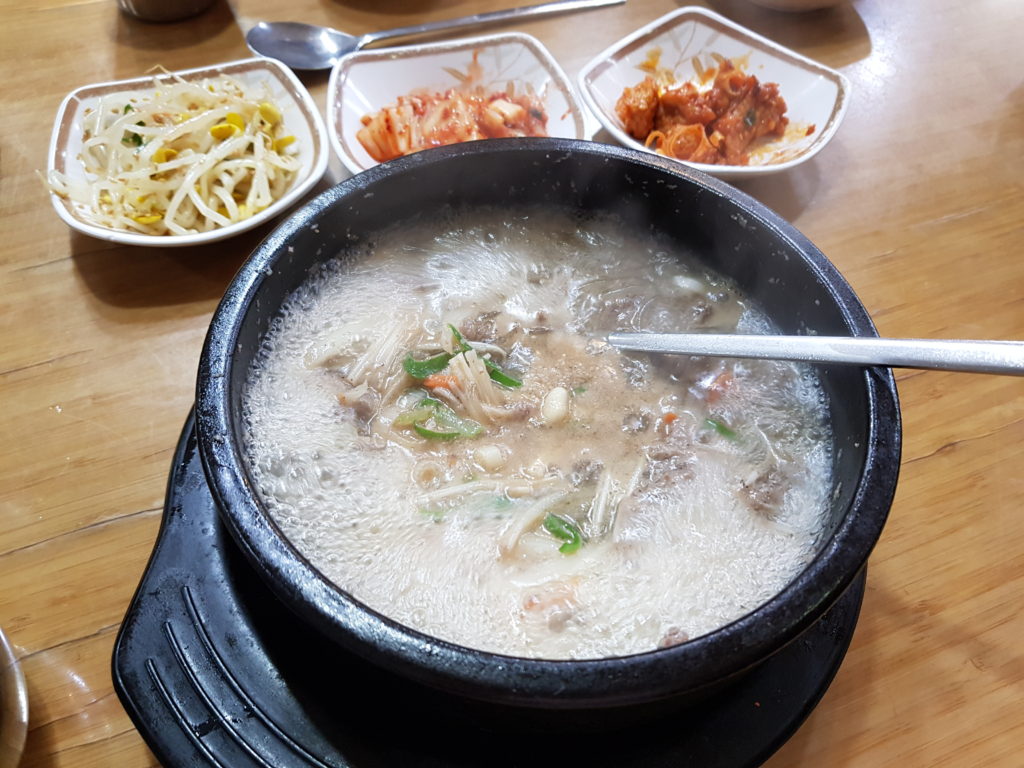
Wander around until you see a small restaurant and join the locals. I had more luck finding one in the small streets next to the bigger “main” roads. Porridge ‘죽’ and (noodle) soup restaurants like Kalguksu ‘칼국수’ often open early. There are also plenty of fast food and ‘Western’ restaurants offering breakfast early; the challenge is in finding Korean food (because you’re in South Korea after all). And if you’re lucky enough to find many restaurants that open early, your next challenge will be to choose between fish and meat.
3) Eat at a market
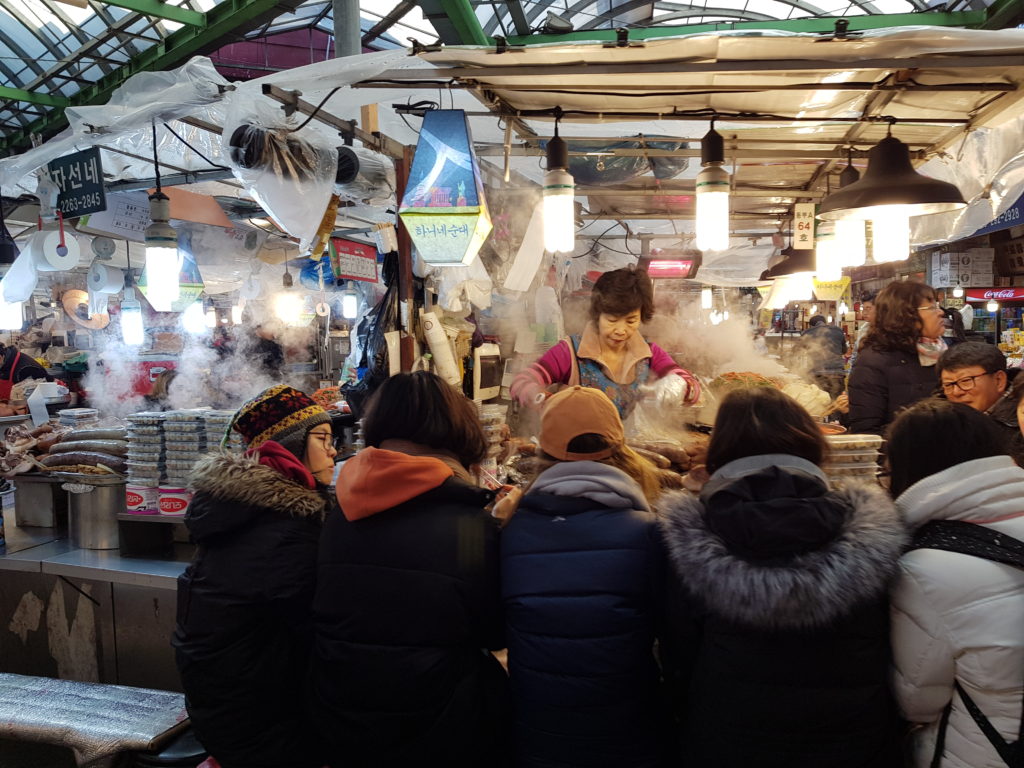
Eat your breakfast at a local market; they often open early.
Examples: mungbean pancakes at Gwangjang market in Dongdaemun or fish at Noryangjin fish market near Noryangjin subway station. Two of the best Korean food spots in Seoul.
Have you tried Korean Baby Octopus? (Don’t worry: it is dead. The nerve system just doesn’t know it yet.)
Also read: Try if You Dare Korea Food
4) Planning your meals
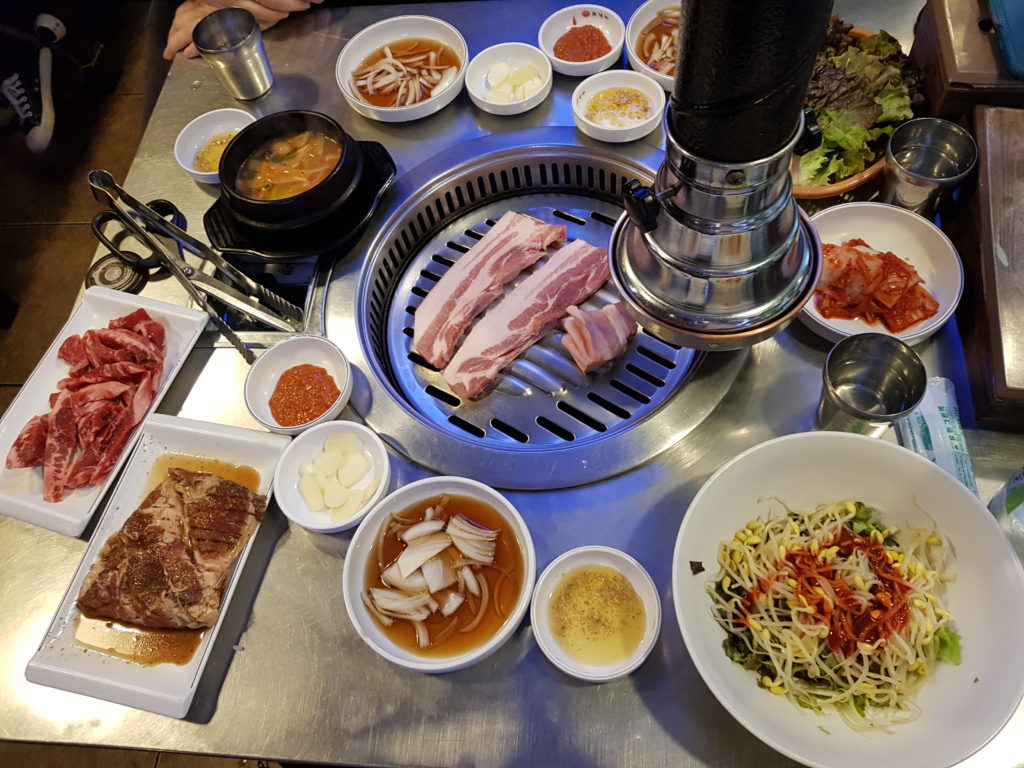
Eat dinner late and have brunch around 11. Eating at this time also helps to prevent busy lunchtime.
5) Convenience store
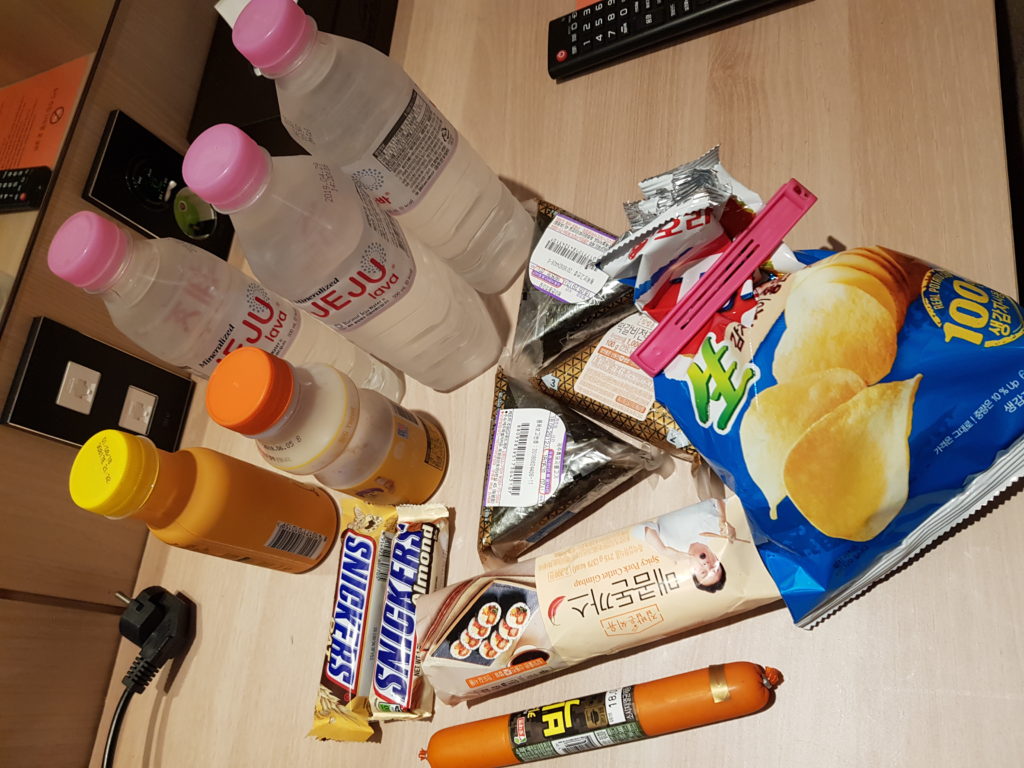
Buy your breakfast at a convenience store. There are plenty of daily fresh meals, rice and sandwiches to choose from.
On the photo above you can see my provisions for climbing Hallasan in Jeju.
6) Food delivery
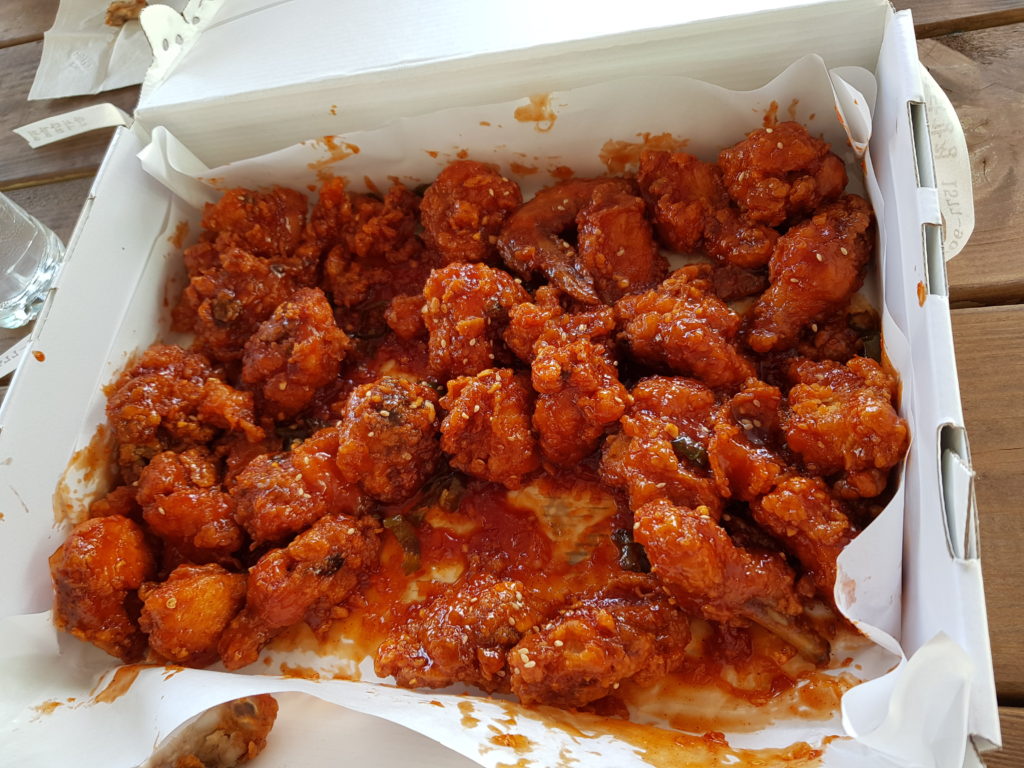
Order food delivery: try the baedalyogiyo app (배달요기요; Android / iOS) if you can read some Korean. It is quite easy to order and pay by credit card. After you finish the meal you can leave the empty dishes outside your front door and they will be picked up. Not every area has delivery options for breakfast, but there are some in the bigger cities.
7) Reviews on Mango Plate
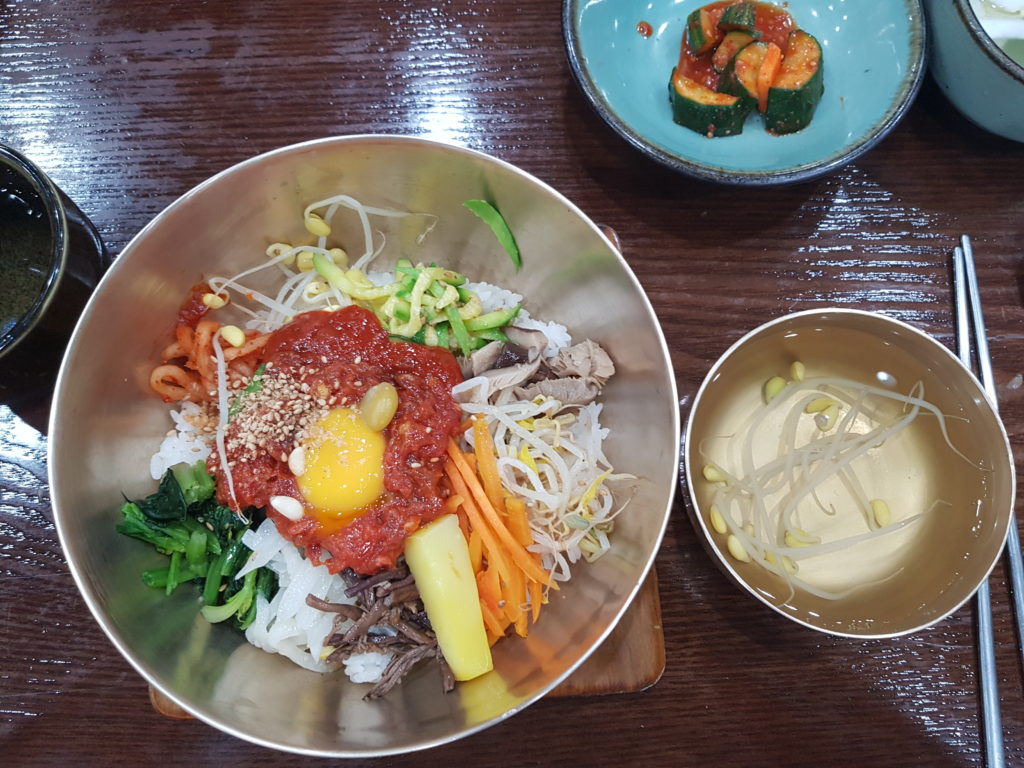
8) At your accommodation
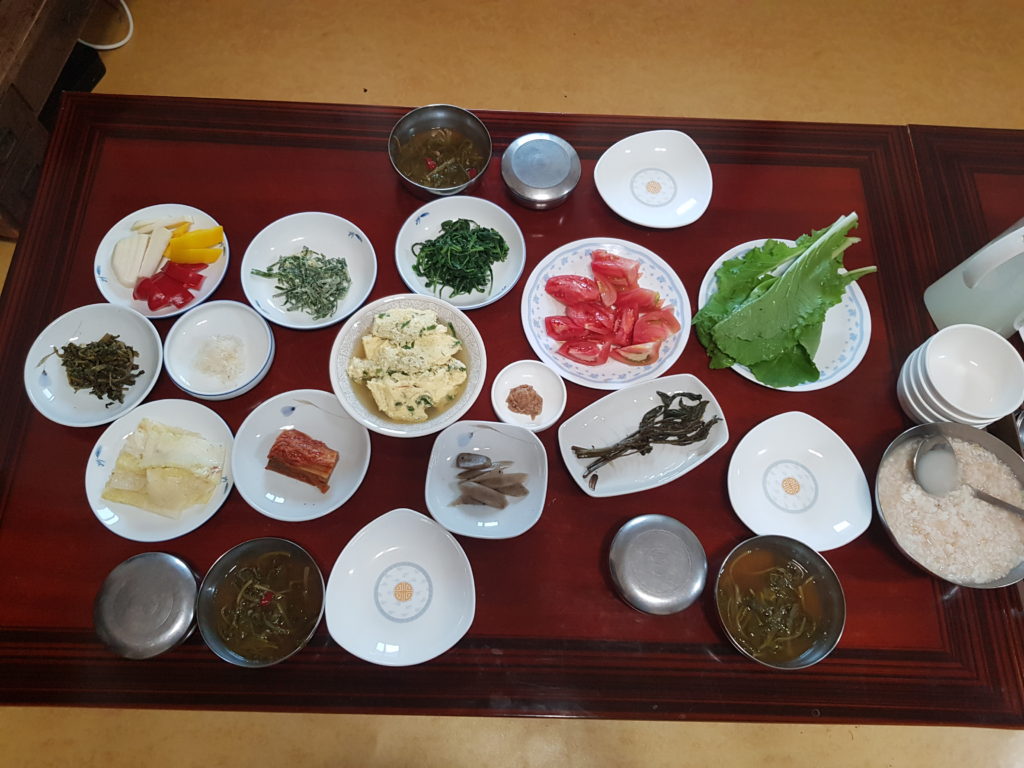
Eat breakfast at your accommodation, but many don’t offer breakfast or only have cup noodles and toast with jam.
It’s a very different story when you’re staying in (more expensive) traditional houses serving traditional Korean food.
Also read: 11 Most Famous Korean Dishes
9) Ask for recommendations
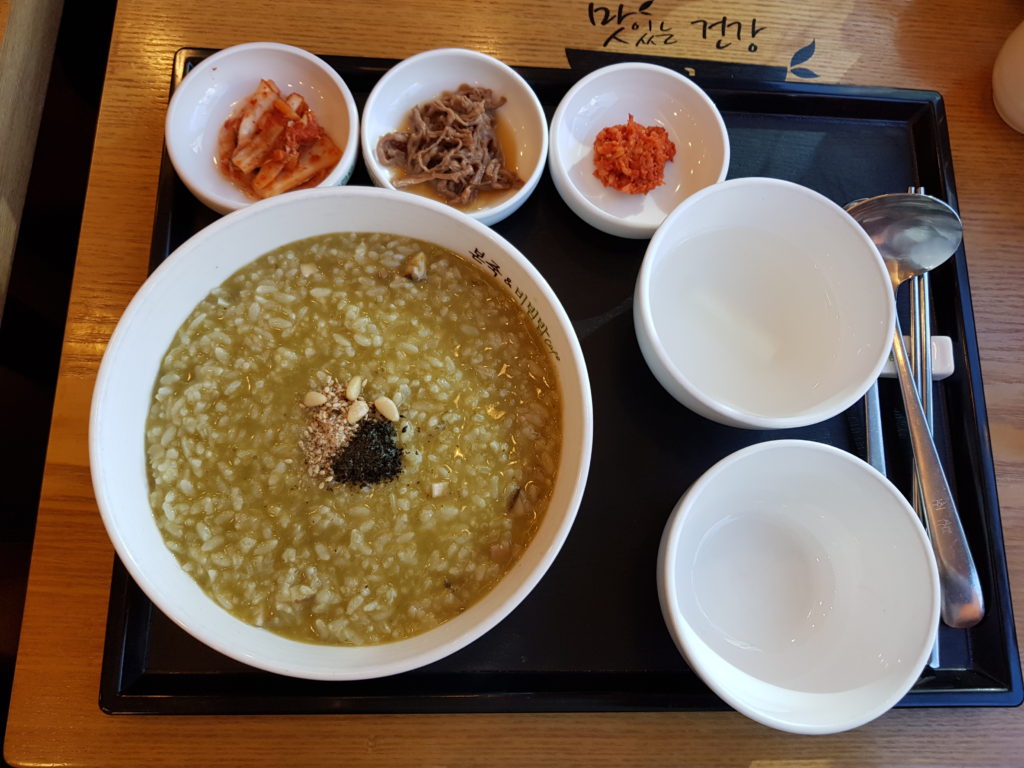
Ask the owners of your accommodation or other travelers for recommendations.
Eat Korean food at home
If you can’t wait for your trip to South Korea, then try your hand at cooking Korean food at home!
By now I’m the proud owner of my second batch of Gochujang (red pepper sauce), Doenjang Jjigae (soybean paste for stew) and Korean Sesame Oil. The Gochujang is essential for making tteokbokki but it is also great to spice up any stir-fried dish or a soup. I use Doenjang or Doenjang Jjigae for any tofu stew I make and also add it to porridge or a light soup. Sesame Oil is great for seasoning dishes like bibimbap and for your own creative mix of lentils and vegetables.
You can find recipes for Korean dishes in Maangchi’s Real Korean Cooking or online at her website.
Pin it for later
